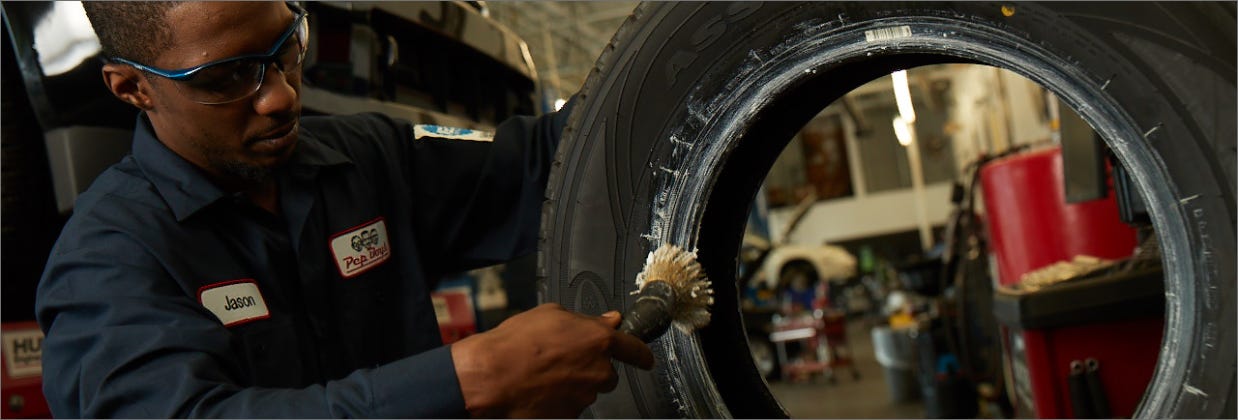Discount Tires Morris IL: Conserve Huge on the top Brands
Wiki Article
The Significance of Tire Solution for Safe Driving
Making certain the security of oneself and others on the roadway is vital when it involves driving. One crucial facet that frequently goes ignored yet is essential for risk-free driving is tire upkeep. The condition of your tires can substantially influence your vehicle's performance and general security. From tire pressure to walk depth, there are a number of vital elements to think about when it pertains to tire solution. Neglecting these vital elements can cause different threats while when traveling. Allow's discover why tire solution is a basic element of risk-free driving and how it can make a significant difference in your overall driving experience.Tire Pressure Upkeep
When tires are underinflated, the get in touch with patch-- the location where the tire fulfills the road-- boosts, leading to too much heat build-up and potential tire blowouts. On the other hand, overinflated tires lower the contact patch, resulting in irregular tire wear and lowered traction.
Footstep Depth Evaluation
Correct tire pressure not just boosts vehicle efficiency however additionally affects step wear, making routine step depth assessment essential for risk-free driving. The step deepness of a tire is essential as it straight influences traction, particularly in damp or snowy conditions. Not enough tread depth can bring about reduced hold when driving, raising the risk of mishaps. To make certain optimal security, drivers ought to regularly examine their tire tread depth utilizing a step depth gauge. The suggested minimum step depth is 2/32 of an inch; however, for boosted performance, specifically in damaging weather problems, a step deepness of 4/32 of an inch or even more is advisable. Uneven tread wear can indicate positioning or suspension problems, additionally underscoring the value of normal step deepness examination. By keeping adequate walk depth, motorists can improve their automobile's handling, stopping, and total security when traveling. Keep in mind, risk-free driving begins with correct tire upkeep, including routine walk depth checks.Regular Tire Turnings

Moreover, regular tire rotations can also enhance traction and handling. As tires use down, their capability to hold the road reduces, especially in wet or slippery conditions. By turning your tires, you make sure that each tire uses uniformly, preserving regular grip. This is specifically important for maintaining control during emergency maneuvers or sudden stops. Ignoring tire turnings can lead to premature tire replacements and potentially endanger your safety and security on the road. Consequently, integrating routine tire turnings into your vehicle upkeep regimen is a basic yet efficient way to promote tire longevity and total driving performance.
Value of Alignment Checks
Positioning checks play a crucial function in making certain that the also put on patterns accomplished with normal tire turnings are preserved for ideal lorry efficiency and safety and security. When your vehicle's wheels are not appropriately straightened, it can lead to uneven tire wear, affecting handling and gas effectiveness.In addition, proper alignment find this enhances road hold and stability, particularly when driving in tough conditions such as wet or icy roads. It helps maintain the vehicle's intended trajectory, decreasing the danger of mishaps because of drifting or pulling. By organizing normal placement checks, you can attend to any kind of concerns immediately, making certain that your vehicle operates at its best and advertising overall safety on the road. Remember, positioning checks are a precautionary procedure that can save you time and money in the long run.
Indications of Tire Use
Keeping attentive monitoring of your tires' problem is critical to ensuring secure and effective driving practices. Among the vital elements to view out for is tire wear, as it straight affects the efficiency and security of your car. There are a number of signs that show your tires may be wearing. Irregular walk wear throughout the tire surface can recommend positioning issues or inappropriate rising cost of living. Bulges, splits, or cuts on the sidewalls are red flags that the tire framework may be endangered. Tread deepness is also important, and if it falls below 2/32 of an inch, it's time to change the tires for optimal grip. In addition, vibrations, specifically at broadband, can suggest tire inequality or other issues. Frequently looking for these indicators of tire wear and addressing them without delay with specialist inspection and upkeep will navigate here certainly not only prolong the life of your tires yet also improve your safety when traveling.Verdict
In conclusion, tire service plays a vital duty in maintaining risk-free driving problems. morris tire. Routine maintenance tasks such as checking tire pressure, evaluating tread depth, rotating tires, and inspecting positioning are essential to guarantee optimal performance and long life of tires. By remaining attentive and resolving signs of wear promptly, vehicle drivers can boost their safety and security on the roadway and minimize the find out here risk of mishaps triggered by tire-related problemsReport this wiki page